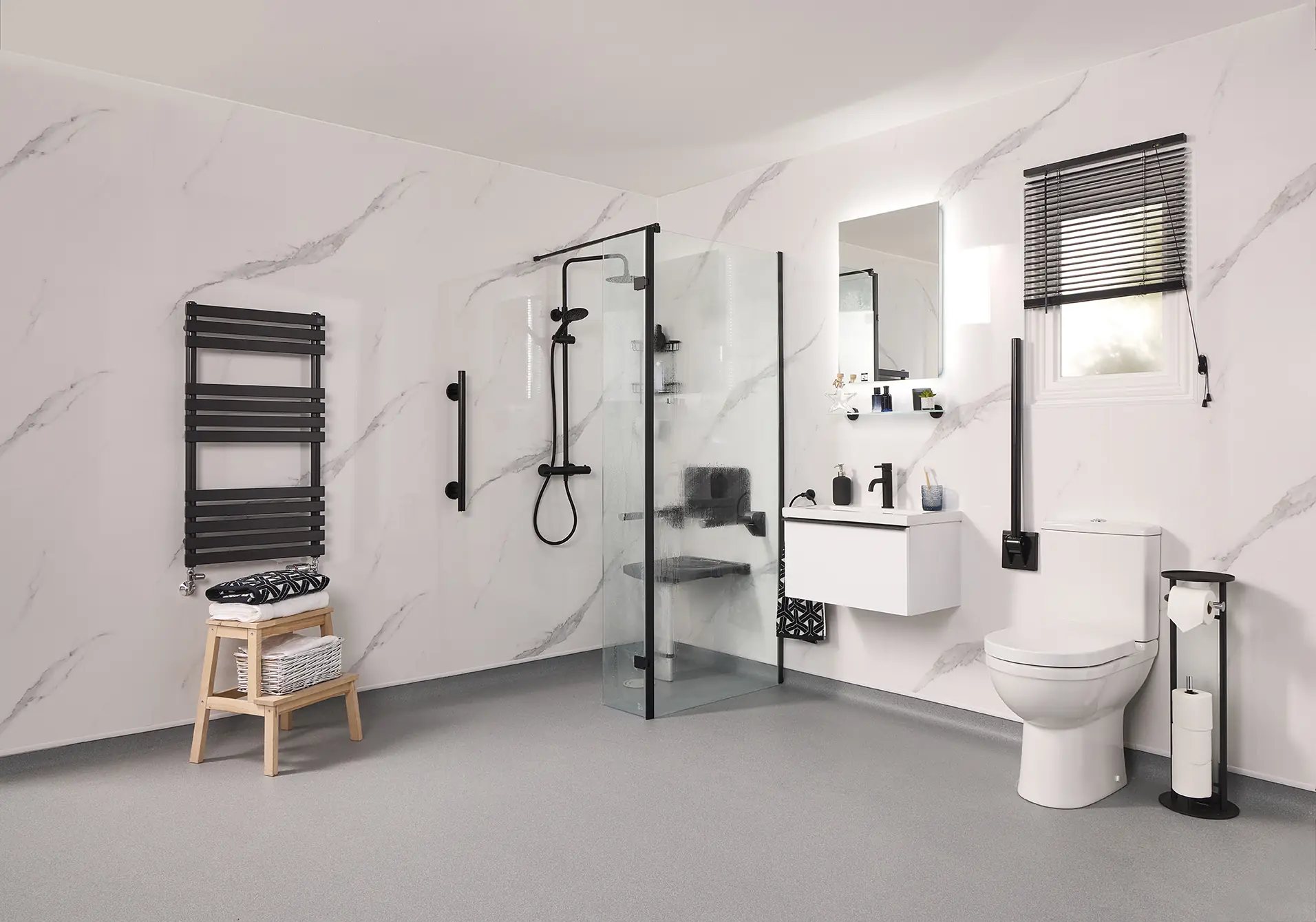Maintaining independence is a priority for many as they age, and the bathroom is one of the most challenging areas of the home for elderly individuals. With mobility changes, tasks like stepping into a bath, using the toilet, or moving on wet, slippery surfaces can present significant risks. Fortunately, bathroom adaptations can make these spaces safer and easier to navigate. Here’s a detailed guide to the top bathroom solutions designed for elderly users to maintain their safety, comfort, and autonomy.
Top 10 Bathroom Adaptations for Elderly Individuals
Creating an elderly-friendly bathroom involves installing features that reduce risks, enhance mobility, and allow for greater independence.
1. Bath Seats, Lifts, and Transfer Benches
- Bath seats: Portable and secure, they allow users to bathe safely while seated. These seats can be removed when not in use, making them practical for shared bathrooms.
- Bathing cushion lifts: Inflatable cushions that gently lower users into the bath and raise them back up. They are lightweight, portable, and safe, offering maximum comfort.
- Transfer benches: Extending over the bath’s edge, these benches allow users to slide safely into the tub without stepping over the side, reducing fall risks.
2. Shower Aids
- Shower seats and chairs: Essential for users who require stability while showering, these aids are available as movable or fixed options.
- Shower commodes: Combining a shower chair and commode, these versatile aids support both bathing and toileting needs, simplifying daily routines.
3. Handrails
Grab bars provide essential support for balance and movement, particularly near:
- Baths
- Showers
- Toilets
- Empty spaces for navigating the bathroom.
Secure installation of these bars is crucial to ensure they provide stability where it’s needed most.
4. Raised Toilet Seats, Lifters, and Frames
- Raised toilet seats: Elevate the toilet height to make sitting and standing easier.
- Toilet frames: Provide added stability for transitions to and from the toilet.
- Toilet lifters: Advanced devices that gently lower users onto the toilet and lift them back up, promoting independence for individuals with limited mobility.
5. Accessible Sink Fixtures
- Lever anti-scald taps: Easier to operate than traditional taps and prevent burns from hot water.
- Pop-up sink plugs: Simplify drainage without twisting or pulling and prevent plugs from being misplaced.
6. Adjustable Shower Heads
Adjustable shower heads allow users to:
- Customise the shower height and angle for comfort.
- Shower while seated, enhancing safety and convenience.
7. Low-Level, Slip-Resistant Shower Trays
Low-level shower trays minimise the need to step over high thresholds, reducing trip hazards. Opt for trays with slip-resistant surfaces to prevent falls.
8. Non-Slip Bath and Shower Mats
Simple but effective, non-slip mats provide added traction in wet areas, significantly reducing the risk of falls.
9. Pump Bottles or Wall Dispensers
Replacing traditional bottles with pump dispensers or wall-mounted units simplifies access to toiletries and minimises the risk of spills or accidents.
10. Adequate Lighting and Mirror Placement
Proper lighting improves visibility, while mirrors placed at the correct height make daily tasks easier. For individuals with dementia, removing mirrors can help reduce anxiety and confusion.
Designing Elderly-Friendly Bathrooms
When adapting a bathroom for elderly use, balance functionality with aesthetics. Here are key installations to consider:
Walk-In Baths
Walk-in baths feature low entry steps and secure, inward-opening doors. Additional features, like power seats, help lift and lower users into the bath with ease.
Walk-In Showers and Wet Rooms
Walk-in showers or wet rooms provide level access with no threshold or tray, making them ideal for wheelchair users. Anti-slip flooring and the option to include shower seats ensure safety and comfort.
Non-Slip Vinyl Flooring
Non-slip vinyl flooring is a must for elderly-friendly bathrooms. Its durability, affordability, and variety of designs make it a popular choice. Using contrasting wall and floor colours can aid visually impaired individuals or those with dementia.
Accessible Toilets
Accessible toilet options include:
- Auto bidet toilets: Featuring automated cleaning and drying for enhanced hygiene and ease of use.
- Height-powered toilets: These adjust in height to accommodate individual mobility needs. Options include:
- Tilt-powered toilets: Tilt the seat for easier transitions.
- Full-rise toilets: Elevate users to a comfortable standing position.
- Raised-height toilets: Ideal for pairing with fold-up support rails for added stability.
Future-Proofing Bathrooms for Changing Needs
A thoughtfully designed bathroom should accommodate evolving mobility needs. If your home lacks a ground-floor bathroom, consider converting an under-stairs cupboard into a toilet or installing a stairlift for easier access to upper floors.
At EA Mobility, we specialise in creating tailored, mobility-friendly bathrooms that blend safety with style. With over 20 years of experience, we offer solutions to suit every need and budget. From walk-in baths to non-slip flooring, our team can guide you through every step of the process.
Contact Us Today
To learn more about our mobility bathroom adaptations or to schedule a free home consultation, contact us:
- Phone: 0800 955 8810
- Brochure: https://eamobility.com/request-brochure/
- Home Visit: https://eamobility.com/
Let us help you design a bathroom that fosters safety, independence, and peace of mind.












